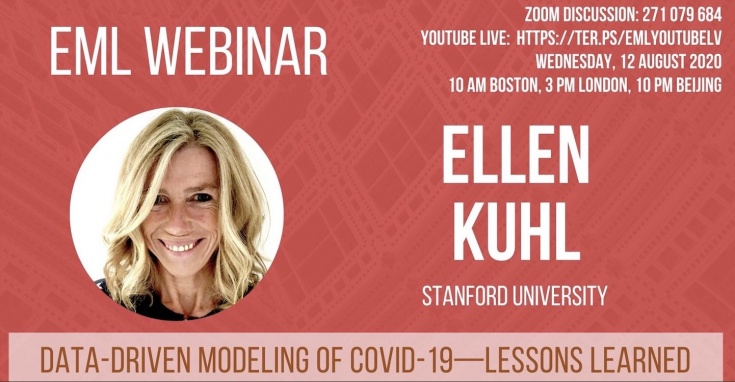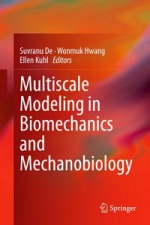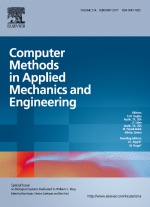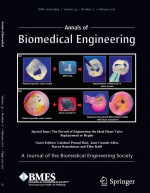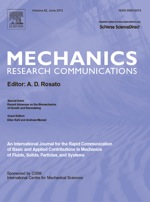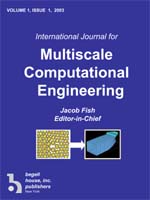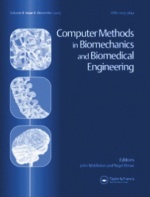(→computer models in biomechanics: from nano to macro) |
|||
| (236 intermediate revisions by one user not shown) | |||
| Line 1: | Line 1: | ||
| − | = | + | <div class="publicationheader">webinars</div> |
| − | + | ==eml webinar== | |
| − | + | ||
| − | + | ||
| − | + | ||
| − | + | ||
| − | + | ||
| − | + | ||
| − | + | ||
| − | + | ||
| − | + | ||
| − | + | ||
| − | + | ||
| − | + | ||
| − | + | ||
| − | + | ||
| − | + | ||
| − | + | ||
| − | + | ||
| − | + | ||
| − | + | ||
| − | + | ||
| − | + | ||
| − | + | ||
| − | + | ||
| − | + | ||
| − | + | ||
| − | + | ||
| − | + | ||
| − | + | ||
| − | + | ||
| − | + | ||
| − | + | ||
| − | + | ||
| − | + | ||
| − | + | ||
| − | + | ||
| − | + | ||
| − | + | ||
| − | + | ||
| − | + | ||
| − | + | ||
| − | + | ||
| − | + | ||
| − | + | ||
| − | + | ||
| − | + | ||
| − | + | ||
| − | + | ||
| − | + | ||
| − | + | ||
| − | + | ||
| − | + | [https://www.youtube.com/watch?v=lBMPfltcDqs extreme mechanics letters webinar] <br> | |
| − | [ | + | [[Image:EMLkuhl.jpg|735px]] |
| − | + | ||
| − | + | ||
| − | + | ||
| − | < | + | <div class="publicationheader">books</div> |
| − | + | ||
| − | </ | + | |
| − | + | ==multiscale modeling in biomechanics and mechanobiology== | |
| − | < | + | <div> |
| − | + | [[Image:book.jpg|150px|left]] | |
| + | {| | ||
| + | | | ||
| + | [http://www.springer.com/us/book/9781447165989 multiscale modeling in biomechanics and mechanobiology] <br> | ||
| + | springer, london, 2015 <br> | ||
| + | [[preface]], [http://link.springer.com/book/10.1007%2F978-1-4471-6599-6 table of contents] <br> | ||
| − | + | contributions by <br> | |
| + | saroj nayak, suvranu de, reinhold lipowsky, wonmuk hwang, | ||
| + | chris jacobs, tarek zohdi, arturas ziemys, | ||
| + | james weiss, jay humphrey, michael sacks, raul valencia | ||
| + | |} | ||
| − | + | </div> | |
| − | + | <div class="spacer"> </div> | |
| − | + | ==computer models in biomechanics from nano to macro== | |
| − | + | ||
| − | + | ||
| − | + | <div> | |
| + | [[Image:iutam.jpg|150px|left]] | ||
| + | {| | ||
| + | | | ||
| + | [http://www.springer.com/materials/mechanics/book/978-94-007-5463-8 computer models in biomechanics: from nano to macro] <br> | ||
| + | springer, dortrecht heidelberg new york london, 2012 <br> | ||
| + | [http://biomechanics.stanford.edu/paper/IUTAMpre.pdf preface], [http://biomechanics.stanford.edu/paper/IUTAMtoc.pdf table of contents] <br> | ||
| − | + | contributions by <br> | |
| + | patrick onck, peter pinsky, bob mc meeking, gerhard holzapfel, markus böl, jonas stalhand, marko vendelin, oliver rohrle, jay humphrey, nele famaey, david vorp, paul watton, serdar goktepe, alfio quarteroni, alberto figueroa, ajit yoganathan, gerard ateshian, jeff weis, stephen cowin, wolfgang ehlers, tim ricken, krishna garikipati, yiannis ventikos, jacques huyghe, larry taber, ellen arruda, edoardo mazza, ralph muller, wolfgang wall | ||
| + | |} | ||
| − | < | + | </div> |
| − | < | + | <div class="spacer"> </div> |
| − | </ | + | |
| − | + | <div class="publicationheader">special issues</div> | |
| − | == | + | ==biological systems== |
| − | + | <div> | |
| − | [http://www. | + | [[Image:cmame.jpg|150px|left]] |
| − | + | {| | |
| − | + | | | |
| − | + | special issue on biological systems <br> | |
| − | + | [http://www.sciencedirect.com/science/journal/00457825/314 computer methods in applied mechanics and engineering] <br> | |
| + | volume 314, 2017, editorial dedicated to bill klug [http://biomechanics.stanford.edu/paper/CMAME17a.pdf (download)] <br> | ||
| − | < | + | contributions by <br> |
| − | + | paul barone, elisa budyn, adrian buganza tepole, suvranu de, dan ennis, jean-frederic gerbeau, hector gomez, alain goriely, tim healey, tom hughes, gianluca iaccarino, antoine jerusalem, bill klug, alison marsden, arif masud, david nordsletten, assad oberai, michael ortiz, peter pinsky, alfio quarteroni, michael sacks, wolfgang wall, tom yankeelov, tarek zohdi, and many others | |
| − | + | |} | |
| − | + | ==heart valve replacement or repair== | |
| − | + | ||
| − | + | ||
| − | + | ||
| − | + | ||
| − | + | ||
| − | + | ||
| − | + | ||
| − | + | ||
| − | + | ||
| − | + | ||
| − | + | ||
| − | + | ||
| − | + | ||
| − | + | ||
| − | + | ||
| − | + | ||
| − | < | + | <div> |
| − | + | [[Image:abme.jpg|150px|left]] | |
| − | + | {| | |
| − | + | | | |
| − | + | special issue on engineering the ideal heart valve replacement or repair <br> | |
| − | + | [http://link.springer.com/article/10.1007/s10439-017-1801-0 annals of biomedical engineering] <br> | |
| − | + | volume XXX, 2017, editorial [http://biomechanics.stanford.edu/paper/ABME17.pdf (download)] <br> | |
| − | + | ||
| − | + | ||
| − | + | ||
| − | + | ||
| − | + | ||
| − | + | ||
| − | + | ||
| − | + | ||
| − | + | ||
| − | + | ||
| − | + | ||
| − | + | ||
| − | + | ||
| − | + | ||
| − | + | ||
| − | + | ||
| − | + | ||
| − | + | ||
| − | + | ||
| − | + | ||
| − | + | ||
| − | + | ||
| − | + | ||
| − | + | contributions by <br> | |
| + | jonathan talbot butcher, lakshmi dasi, robert gorman, joseph gorman III, jane grande-allen, | ||
| + | zhaoming he, frederic heim, arash kheradvar, stephen little, muralidhar padala, jean ruel, | ||
| + | robert tranquillo, michael sacks, wei sun, ajit yoganathan, and many others | ||
| + | |} | ||
| − | + | ==growing matter== | |
| − | + | ||
| − | + | ||
| − | < | + | <div> |
| − | < | + | [[Image:jmbbm.jpg|150px|left]] |
| − | + | {| | |
| + | | | ||
| + | [http://biomechanics.stanford.edu/Matter special issue on growing matter] <br> | ||
| + | [http://www.sciencedirect.com/science/journal/17516161/29 journal of the mechanical behavior of biomedical materials] <br> | ||
| + | volume 29, 2014, editorial [http://biomechanics.stanford.edu/paper/JMBBM14a.pdf (download)], all contributions [http://biomechanics.stanford.edu/Matter (download)] <br> | ||
| − | < | + | contributions by <br> |
| − | + | gerard ateshian, frank baaijens, phil bayly, markus böl, caroline bouten, xi-qiao feng, alberto figueroa, rafael grytz, jay humphrey, andreas menzel, kristin myers, cees oomens, djenane pamplona, larry taber, jonathan vande geest, and many others | |
| − | + | |} | |
| − | + | ||
| − | + | ||
| − | < | + | ==biomechanics of growth and remodeling== |
| − | ( | + | |
| − | + | <div> | |
| − | + | [[Image:mrcom.jpg|150px|left]] | |
| − | + | {| | |
| − | ( | + | | |
| − | + | [http://biomechanics.stanford.edu/Growth special issue on advances on the biomechanics of growth and remodeling] <br> | |
| + | [http://www.sciencedirect.com/science/journal/00936413/42 mechanics research communications] <br> | ||
| + | volume 42, 2012, introduction [http://biomechanics.stanford.edu/paper/MRCOM12.pdf (download)], all contributions [http://biomechanics.stanford.edu/Growth (download)] <br> | ||
| + | |||
| + | contributions by <br> | ||
| + | davide ambrosi, francisco armero, theo arts, gerard ateshian, seungik baek, martine ben amar, peter bovendeerd, andrew mc culloch, anja geitmann, julius guccione, rafael grytz, jeff holmes, gerhard holzapfel, hanna isaksson, ghassan kassab, roy kerckhoffs, sergio oller, luigi preziosi, tarek zohdi, and many others | ||
| + | |} | ||
| + | |||
| + | </div> | ||
| + | <div class="spacer"> </div> | ||
| + | |||
| + | ==active tissue modeling: from cells to muscle== | ||
| + | |||
| + | <div> | ||
| + | [[Image:ijmce.jpg|150px|left]] | ||
| + | {| | ||
| + | | | ||
| + | special issue on active tissue modeling: <br> | ||
| + | from single muscle cells to muscular contraction <br> | ||
| + | [http://www.begellhouse.com/journals/61fd1b191cf7e96f,42f1beba0b405e70.html international journal for multiscale computational engineering] <br> | ||
| + | volume 10, 2012, preface [http://biomechanics.stanford.edu/paper/IJMCE12pre.pdf (download)] <br> | ||
| + | |||
| + | contributions by <br> | ||
| + | mark king, cornelia kober, maike sturmat, robert sader, ciaran simms, melanie van loocke, garry lyons, peter huijing, oscar abilez, ahmed assar, christopher zarins, dominique chapelle, philippe moireau, patrick le tallec, michel sorine | ||
| + | |} | ||
| + | |||
| + | </div> | ||
| + | <div class="spacer"> </div> | ||
==computer simulations of mechanobiology== | ==computer simulations of mechanobiology== | ||
| Line 190: | Line 142: | ||
</div> | </div> | ||
<div class="spacer"> </div> | <div class="spacer"> </div> | ||
| + | |||
==mechanics in biology: cells and tissue== | ==mechanics in biology: cells and tissue== | ||
| Line 206: | Line 159: | ||
|} | |} | ||
| − | |||
| − | |||
| − | |||
| − | |||
| − | |||
| − | |||
| − | |||
| − | |||
| − | |||
| − | |||
| − | |||
| − | |||
| − | |||
| − | |||
| − | |||
| − | |||
| − | |||
| − | |||
| − | |||
| − | |||
| − | |||
| − | |||
| − | |||
| − | |||
| − | |||
| − | |||
| − | |||
| − | |||
| − | |||
| − | |||
| − | |||
| − | |||
| − | |||
| − | |||
| − | |||
| − | |||
| − | |||
| − | |||
| − | |||
| − | |||
| − | |||
| − | |||
| − | |||
| − | |||
| − | < | + | <div class="publicationheader">conferences & travel</div> |
| − | + | ||
| − | + | ||
| − | + | ||
| − | + | ||
| − | + | ||
| − | + | ||
| − | + | ||
| − | + | ||
| − | + | ||
| − | + | ||
| − | + | ||
| − | + | ||
| − | + | 12/10/17-12/14/17 [https://www.elsevier.com/events/conferences/international-conference-on-mechanics-of-biomaterials-and-tissues 7th intl conference on mechanics of biomaterials and tissues], big island, hawaii <br> | |
| − | + | 09/04/17-09/06/17 [https://www.uni-goettingen.de/en/558862.html physics meets medicine], gottingen, germany <br> | |
| − | + | 08/29/17-08/31/17 [http://www.conferencemanager.dk/mcacm/ multiscale computational analysis of complex materials], copenhagen, danmark <br> | |
| − | [ | + | 07/17/17-07/20/17 [http://14.usnccm.org/ usnccm14], montreal, canada <br> |
| − | 07/ | + | 06/12/17-06/16/17 [http://www.cism.it/courses/ cism course on soft tissue growth and remodeling], udine, italy <br> |
| − | + | 05/08/17-05/11/17 [https://www.interpore.org/76-event-booking/9th-international-conference-on-porous-media-annual-meeting/326-keynote-speakers15 interpore], rotterdam, holland <br> | |
| − | + | 03/19/17-03/22/17 [http://emi2017-ic.com.br/ emi international], rio de janeiro, brazil <br> | |
| − | + | 11/06/16-11/06/16 [http://www.tcsnycmarathon.org/ nyc 26.2], new york <br> | |
| − | + | 09/19/16-09/20/16 [http://www.ce.gatech.edu/academics/groups/structural semm seminar], georgia tech, atlanta <br> | |
| − | + | 09/11/16-09/11/16 [http://www.ironman.com/triathlon/events/americas/ironman-70.3/santa-cruz.aspx#/axzz4F3eRjqX8 im 70.3], santa cruz, california <br> | |
| − | + | 08/17/16-08/19/16 [http://www.pdn.cam.ac.uk/other-pages/nms/neuronal-mechanics-seminar/wilhelm-and-else-heraeus-seminar-on-neuronal-mechanics neuronal mechanics], bad honnef, germany <br> | |
| − | + | 07/24/16-07/29/16 [http://wccm2016.org/main/ wccm XII], seoul, korea <br> | |
| − | + | 06/28/16-07/08/16 [http://www.ltm.uni-erlangen.de/img/flyer_Einladung_180416.pdf introduction to neuromechanics], erlangen, germany <br> | |
| − | + | 11/01/15-11/07/15 [https://www.mfo.de/occasion/1545b/www_view miniworkshop on morphogenesis and pattern selection], oberwolfach, germany <br> | |
| − | + | 07/26/15-07/30/15 [http://13.usnccm.org/ 13th usnccm] san diego, california <br> | |
| − | + | 07/06/15-07/10/15 [http://www.esmc2015.org/ 9th european solid mechanics conference], madrid, spain <br> | |
| − | + | 11/03/14-11/07/14 [http://mbi.osu.edu/event/?id=817 axonal transport and neuronal mechanics], ohio <br> | |
| − | + | 10/13/14-10/15/14 [https://www.tue.nl/en/university/departments/biomedical-engineering/research/research-groups/soft-tissue-biomechanics-and-engineering/cmbbe-2014/home/ computer methods in biomech & biomed engineering], amsterdam, netherlands <br> | |
| − | + | 07/20/14-07/25/14 [http://www.wccm-eccm-ecfd2014.org/frontal/default.asp 11th world congress on computational mechanics], barcelona, spain <br> | |
| − | + | 06/04/14-06/06/14 [http://www.lmt.ens-cachan.fr/version-francaise/manifestations-/instabilities-across-the-scales-ias-2014-216968.kjsp instabilities across the scales], cachan, france <br> | |
| − | + | 04/21/14-04/25/14 [http://www.midwestmechanics.org/speakers.php?order=year%20DESC midwest mechanics seminar II], purdue, illinois, iit, iowa state, minnesota<br> | |
| − | + | 03/23/14-03/25/14 [http://aimbe.org/events/2014-annual-event/ engineering and the future of health care], washington, dc <br> | |
| − | + | 03/10/14-03/14/14 [http://jahrestagung.gamm-ev.de/ gamm 2014], erlangen, germany <br> | |
| − | + | 02/13/14-02/14/14 [http://mmvmb2.usacm.org/ multiscale methods and validation in medicine and biology], berkeley, california <br> | |
| − | + | 01/27/14-01/31/14 [http://www.midwestmechanics.org/speakers.php?order=year%20DESC midwest mechanics seminar I], mich, mich state, notre dame, n-western, wisconsin <br> | |
| − | + | 01/13/14-01/14/14 [http://www.maths.ox.ac.uk/groups/occam/events/brain-mechanics-0 second oxford brain mechanics workshop], oxford, uk <br> | |
| − | + | 10/16/13-10/17/13 [http://www.3ds.com/events/simulia-regional-user-meetings/west-regional-user-meeting/agenda/ simulia user meeting], santa clara, california <br> | |
| − | + | 09/25/13-09/28/13 [http://bmes.org/annualmeeting bmes annual meeting], seattle, washington <br> | |
| − | + | 09/03/13-09/05/13 [http://ccubedconference.com/ current challenges in computing], napa, california <br> | |
| − | + | 07/22/13-07/25/13 [http://12.usnccm.org/ 12th usnccm], raleigh, north carolina, usa <br> | |
| − | + | 05/22/13-05/24/13 [http://www.euromech545.de/ euromech frontiers in finite deformation electromechanics], dortmund, germany <br> | |
| − | + | 05/21/13-05/24/13 [http://www.3ds.com/company/events/scc-2013/overview/ simulia community conference], vienna, austria <br> | |
| − | + | 04/03/13-04/07/13 [http://cmbbe13.sci.utah.edu/ computer methods in biomech & biomed engineering], salt lake city, utah <br> | |
| − | + | 12/09/12-12/11/12 [http://www.computationalsurgery.org/ 4th annual int conf in computational surgery], boston, ma <br> | |
| − | + | ||
| − | + | ||
| − | + | ||
| − | + | ||
| − | + | ||
| − | + | ||
| − | + | ||
| − | + | ||
| − | + | ||
| − | [ | + | |
| − | 07/ | + | |
| − | + | ||
| − | + | ||
| − | + | ||
| − | < | + | |
| − | + | ||
| − | + | ||
| − | + | ||
| − | + | ||
| − | + | ||
| − | + | ||
| − | + | ||
| − | [ | + | |
| − | + | ||
| − | + | ||
| − | + | ||
| − | + | ||
| − | + | ||
| − | + | ||
| − | <br> | + | |
| − | + | ||
| − | + | ||
| − | [ | + | |
| − | + | ||
| − | + | ||
| − | + | ||
| − | + | ||
| − | + | ||
| − | + | ||
| − | <br> | + | |
| − | + | ||
| − | < | + | |
| − | [ | + | |
| − | + | ||
| − | + | ||
| − | + | ||
| − | + | ||
| − | + | ||
| − | + | ||
| − | <br> | + | |
| − | + | ||
| − | + | ||
| − | [ | + | |
| − | + | ||
| − | + | ||
| − | + | ||
| − | + | ||
| − | + | ||
| − | + | ||
| − | <br> | + | |
| − | + | ||
| − | < | + | |
| − | [ | + | |
| − | + | ||
| − | + | ||
| − | + | ||
| − | + | ||
| − | + | ||
| − | + | ||
| − | + | ||
| − | + | ||
| − | < | + | |
| − | + | ||
| − | + | ||
09/03/12-09/07/12 [http://www.biomech.tugraz.at/summerschool-2012/ modeling and simulation in soft tissue biomechanics], graz, austria <br> | 09/03/12-09/07/12 [http://www.biomech.tugraz.at/summerschool-2012/ modeling and simulation in soft tissue biomechanics], graz, austria <br> | ||
| − | |||
07/09/12-07/13/12 [http://www.esmc2012.tugraz.at/ european solid mechanics conference], graz, austria <br> | 07/09/12-07/13/12 [http://www.esmc2012.tugraz.at/ european solid mechanics conference], graz, austria <br> | ||
07/02/12-07/05/12 [http://math.uni-graz.at/mobis/meetings.html efficient solvers in biomedical application], graz, austria <br> | 07/02/12-07/05/12 [http://math.uni-graz.at/mobis/meetings.html efficient solvers in biomedical application], graz, austria <br> | ||
| Line 428: | Line 250: | ||
06/20/07-06/24/07 [http://divisions.asme.org/bed/events/summer07.html asme summer bioengineering conference], | 06/20/07-06/24/07 [http://divisions.asme.org/bed/events/summer07.html asme summer bioengineering conference], | ||
keystone, colorado <br> | keystone, colorado <br> | ||
| − | ... | + | |
| + | |||
| + | <div class="publicationheader">outreach</div> | ||
| + | |||
| + | ==brain bee @stanford== | ||
| + | |||
| + | how does our brain get its folds? stanford brain bee - qualifying round of the international | ||
| + | brain bee, a neuroscience competition for high school students, stanford university, | ||
| + | 01/10/2015 | ||
| + | |||
| + | [[Image:brainbee.jpg|735px]] | ||
| + | |||
| + | ==spaghetti towers @stanford== | ||
| + | |||
| + | some impressions of stanford's class of 2020 during stanford's society of women engineers' exploring new worlds spaghetti tower building contest, | ||
| + | more pics [[spaghetti towers 01]], [[spaghetti towers 02]] <br> | ||
| + | |||
| + | <html> | ||
| + | <center> | ||
| + | <table> | ||
| + | <tr> | ||
| + | <td><img src="spaghettis00/s1.jpg"> | ||
| + | <td><img src="spaghettis00/s2.jpg"> | ||
| + | <td><img src="spaghettis00/s3.jpg"> | ||
| + | <td><img src="spaghettis00/s4.jpg"> | ||
| + | </tr> | ||
| + | </tr> | ||
| + | </table> | ||
| + | </center> | ||
| + | </html> | ||
Latest revision as of 22:51, 17 September 2020
[edit] eml webinar
extreme mechanics letters webinar
[edit] multiscale modeling in biomechanics and mechanobiology
|
multiscale modeling in biomechanics and mechanobiology contributions by |
[edit] computer models in biomechanics from nano to macro
|
computer models in biomechanics: from nano to macro contributions by |
[edit] biological systems
|
special issue on biological systems contributions by |
[edit] heart valve replacement or repair
|
special issue on engineering the ideal heart valve replacement or repair contributions by |
[edit] growing matter
|
special issue on growing matter contributions by |
[edit] biomechanics of growth and remodeling
|
special issue on advances on the biomechanics of growth and remodeling contributions by |
[edit] active tissue modeling: from cells to muscle
|
special issue on active tissue modeling: contributions by |
[edit] computer simulations of mechanobiology
|
special issue on computer simulations of mechanobiology contributions by |
[edit] mechanics in biology: cells and tissue
|
theme issue on
mechanics in biology: cells and tissue contributions by |
12/10/17-12/14/17 7th intl conference on mechanics of biomaterials and tissues, big island, hawaii
09/04/17-09/06/17 physics meets medicine, gottingen, germany
08/29/17-08/31/17 multiscale computational analysis of complex materials, copenhagen, danmark
07/17/17-07/20/17 usnccm14, montreal, canada
06/12/17-06/16/17 cism course on soft tissue growth and remodeling, udine, italy
05/08/17-05/11/17 interpore, rotterdam, holland
03/19/17-03/22/17 emi international, rio de janeiro, brazil
11/06/16-11/06/16 nyc 26.2, new york
09/19/16-09/20/16 semm seminar, georgia tech, atlanta
09/11/16-09/11/16 im 70.3, santa cruz, california
08/17/16-08/19/16 neuronal mechanics, bad honnef, germany
07/24/16-07/29/16 wccm XII, seoul, korea
06/28/16-07/08/16 introduction to neuromechanics, erlangen, germany
11/01/15-11/07/15 miniworkshop on morphogenesis and pattern selection, oberwolfach, germany
07/26/15-07/30/15 13th usnccm san diego, california
07/06/15-07/10/15 9th european solid mechanics conference, madrid, spain
11/03/14-11/07/14 axonal transport and neuronal mechanics, ohio
10/13/14-10/15/14 computer methods in biomech & biomed engineering, amsterdam, netherlands
07/20/14-07/25/14 11th world congress on computational mechanics, barcelona, spain
06/04/14-06/06/14 instabilities across the scales, cachan, france
04/21/14-04/25/14 midwest mechanics seminar II, purdue, illinois, iit, iowa state, minnesota
03/23/14-03/25/14 engineering and the future of health care, washington, dc
03/10/14-03/14/14 gamm 2014, erlangen, germany
02/13/14-02/14/14 multiscale methods and validation in medicine and biology, berkeley, california
01/27/14-01/31/14 midwest mechanics seminar I, mich, mich state, notre dame, n-western, wisconsin
01/13/14-01/14/14 second oxford brain mechanics workshop, oxford, uk
10/16/13-10/17/13 simulia user meeting, santa clara, california
09/25/13-09/28/13 bmes annual meeting, seattle, washington
09/03/13-09/05/13 current challenges in computing, napa, california
07/22/13-07/25/13 12th usnccm, raleigh, north carolina, usa
05/22/13-05/24/13 euromech frontiers in finite deformation electromechanics, dortmund, germany
05/21/13-05/24/13 simulia community conference, vienna, austria
04/03/13-04/07/13 computer methods in biomech & biomed engineering, salt lake city, utah
12/09/12-12/11/12 4th annual int conf in computational surgery, boston, ma
09/03/12-09/07/12 modeling and simulation in soft tissue biomechanics, graz, austria
07/09/12-07/13/12 european solid mechanics conference, graz, austria
07/02/12-07/05/12 efficient solvers in biomedical application, graz, austria
06/20/12-06/23/12 asme summer bioengineering conference, fajardo, puerto rico
03/26/12-03/30/12 gamm 2012, darmstadt, germany
02/13/12-02/14/12 multiscale methods and validation in medicine and biology, san francisco, california
08/29/11-09/02/11 iutam symposium on computer models in biomechanics, stanford, california
07/25/11-07/29/11 11th usnccm,
minneapolis, minnesota
06/22/11-06/25/11 asme summer bioengineering conference,
farmington, pennsylvania
04/18/11-04/21/11 gamm 2011,
graz, austria
10/06/10-10/09/10 bmes 2010,
austin, texas
09/26/10-10/01/10 birm mathematical foundation of mechanical biology,
banff, canada
07/19/10-07/23/10 wccm/apcom2010,
sydney, australia
06/27/10-07/02/10 16th usnctam,
state college, pennsylvania
06/23/10-06/25/10 modern trends in geomechanics II,
stanford, california
03/22/10-03/26/10 gamm 2010,
karlsruhe, germany
01/27/10-01/28/10 modeling biological materials,
college station, texas
10/06/09-10/13/09 erlangen, germany
09/02/09-09/04/09 complas x,
barcelona, spain
07/16/09-07/19/09 10th usnccm,
columbus, ohio
06/17/09-06/21/09 asme summer bioengineering conference, lake tahoe, california
08/31/08-09/06/08 mathematics of growth & remodeling,
miniworkshop, oberwolfach, germany
08/24/08-08/30/08 ictam 2008,
adelaide, australia
06/25/08-06/29/08 asme summer bioengineering conference,
marco island, florida
06/18/08-06/21/08 iutam symposium biomechanics,
woods hole, massachusetts
03/02/08-03/05/08 orthopaedic research society,
54th annual meeting, san francisco, california
09/20/07-09/21/07 growth in the desert,
workshop, tucson, arizona
07/23/07-07/26/07 9th usnccm,
san francisco, california
07/16/07-07/20/07 iciam 07,
zurich, switzerland
07/02/07-07/05/07 instabilities across the scales,
delft, the netherlands
06/20/07-06/24/07 asme summer bioengineering conference,
keystone, colorado
[edit] brain bee @stanford
how does our brain get its folds? stanford brain bee - qualifying round of the international brain bee, a neuroscience competition for high school students, stanford university, 01/10/2015
[edit] spaghetti towers @stanford
some impressions of stanford's class of 2020 during stanford's society of women engineers' exploring new worlds spaghetti tower building contest,
more pics spaghetti towers 01, spaghetti towers 02

| 
| 
| 
|
